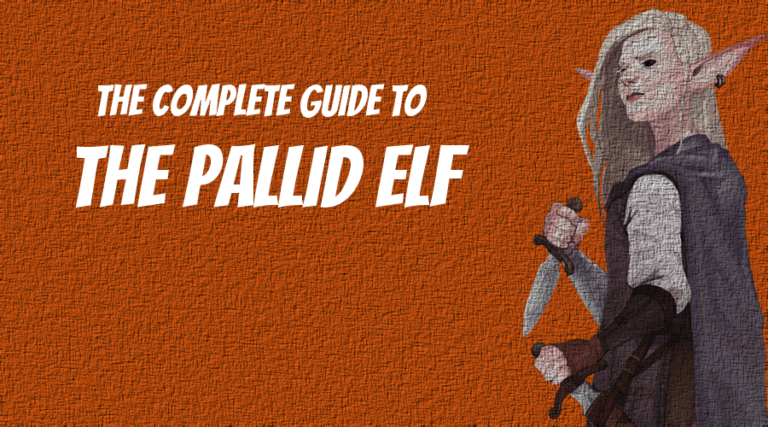Paladin Oaths 5E: We Rank the Paladin Subclasses
When it comes to playing a paladin in Dungeons and Dragons, the class-specific features are enough to build a character around. That said, the paladin oaths that come into play offer a lot of flavor and options. Let’s dive into our rankings and pick the best subclass for you with our Paladin Oaths 5E Guide.

Table of Contents
Our Criteria for Ranking the Paladin Oaths
Our rankings for Paladin oaths are based on a thorough evaluation of five different factors. It’s important to note that these rankings are only relevant in comparison to other paladin subclasses, and may not necessarily hold up against subclasses of other classes. That being said, the following are the factors we consider when ranking these oaths include:
- Design. In evaluating subclasses, we prioritize those that offer mechanics that are useful and regularly utilized by players. This includes giving particular attention to low-level abilities, as the majority of characters will not reach the maximum level. Subclasses with features that are not effective or likely to be rarely used will not be highly ranked on our list.
- Clarity. A good subclass should be easy to understand and not use overly complex or convoluted language. This can make playing the subclass enjoyable and prevent conflicts between players and Dungeon Masters due to misunderstandings of the subclass’s terms.
- Fun. The options for subclasses should be enjoyable, offering meaningful choices and features that won’t leave you at a disadvantage compared to the rest of your group. It’s important to strike a balance between optimization and enjoyment when it comes to selecting a subclass.
- Theme. We also prefer subclasses that have a strong theme that ties the features of the archetype together. All things equal, we weight subclasses with interesting themes over archetypes that lack any sort of unifying theme or concept.
- Versatility. When evaluating subclasses, we prioritize those that offer versatility and the ability to create a variety of character builds. While it is important to excel at a specific skill or task, the ability to adapt and perform a range of roles is even more valuable. Versatility is a key factor in our assessment of subclasses.
What is the Best Paladin Oath?
Don’t want to skim the entire list? Here is a quick look at our favorite paladin oath in 5E.
The Oath of Vengeance excels at the paladin’s strongest suit: dealing big damage against a single target. It comes with a stellar spell list and has great options from the very beginning. As you level, this paladin subclass offers ways to track down fleeing enemies and helpful uses of your reaction for additional attacks. The Oath of Vengeance makes the most of the Paladin’s inherent strengths.
Best Paladin Oaths 5E Rankings
Maybe it is just the strength of the class in general, but there are not a lot of bad options when it comes to paladin archetypes. While it is fun to make these rankings, I struggled with this one a bit. The good news is that you can make any of these classes work, so picking the oath that fits your character the best is a great idea.
Another thing that sticks out is that these subclasses are more situational than other classes. It makes sense, given that the baseline paladin features are good across the board. That means, however, that the best subclass in one campaign might not be the best in another. Your choice for the best subclass will very different if you expect to face hordes of undead versus a bunch of humanoid cannon fodder.
9. Oath of the Watchers
The Oath of the Watchers struggles for the same reason Oath of the Ancients does. It is useful in very limited situations and has little to offer outside of that. In this case, the Oath of the Watchers excels at taking on extraplanar monsters. Not facing one of those? Well, enjoy the generic class features.
It’s not all bad news. At Level 7 you get Aura of the Sentinel that gives your allies within 10 feet of your the addition of your proficiency bonus to their initiative rolls. However, your level 20 feature is largely tied to extraplanar creatures which is fairly limited. In the right campaign setting full of celestials or fiends, this could be great. Otherwise, skip this Oath.
8. Oath of the Ancients
At the bottom of our paladin oaths list is. Oath of the Ancients. Essentially, this subclass is a marriage between paladin and druid. Thanks to the strength of this class in general, even at the bottom of the list this oath is still fairly strong.
In some limited situations, this archetype really sings. Fighting against fey or need to disable a single creature during a fight? Awesome! Oath of the ancients can help. In general there are better options. One of the major weaknesses is the selection of oath spells. These spells are very situational, like Tree Stride or Speak with Animals. If your campaign is forest-based this could be a good option, but a lot of these abilities are going to be useless in places like the Underdark.
7. Oath of Glory
The Oath of Glory involves themes of athleticism and epic heroism that fit thematically with the Mythic Odysseys of Theros. The concept of this subclass is fun, but it is hardly optimized. The highlights of the subclass are the two Channel Divinity options. Peerless Athlete gives you advantage on strength or dexterity checks, which is great for grappling. Inspiring Smite lets you dish out temporary HP to allies when dealing damage with Divine Smite.
The major drawbacks are underwhelming higher-level features and a spell list that is dominated by concentration spells. Features like Aura of Alacrity give you and your party a boost to walking speed, but only if they can stay within 5 feet of you. Even the level 20 feature is great but hampered by only lasting a minute. There are some useful parts for certain, but all told there are better options available.
6. Oath of the Crown
If you’re looking to play a defender with some decent roleplaying flair, Oath of the Crown is for you. Unfortunately, if you want to do much of anything else it’s probably not. What Oath of the Crown does exceptionally well is draw hostile fire. You have access to unique taunts with your channel divinity which force your enemies to focus on you. There are also a few nice oath spells like Compelled Duel and Circle of Power. One major drawback of the subclass is that while you have many options for absorbing damage, the Oath of the Crown does little for actually boosting your tank.
5. Oath of Redemption
This might be low on the list from an optimization standpoint, but the Oath of Redemption is a fantastic role-playing option. The central theme for the Oath of Redemption is nonviolence. While this is antithetical to many players’ concept of a paladin, the class is ripe with spells and abilities that allow you to resolve conflict nonviolently.
The oath spells are excellent and all fit the theme. You get access to some defensive classics like Stoneskin and Counterspell, and the low-level options are also strong. The class arguably has the best one-two punch of channel divinities as well, with a big buff to persuasion checks and a way to deal damage against tough opponents.
In fact, there is little to the subclass that doesn’t fit the theme. The major problem is that you are limited in what you can do, especially in fights where the opponent isn’t going to be deterred from combat.
4. Oath of Devotion
The Oath of Devotion is frequently knocked as the “vanilla” option for paladins. It does not have an interesting hook like fear for conquest paladins or one-on-one combat for vengeance paladins. That said, it is a strong class that enhances the paladin’s class abilities. Thanks to this, it is useful in the widest range of campaigns.
Sacred Weapon and Turn undead are great for low-level Devotion paladins, but things only get better as you level up. Purity of Spirit and Holy Nimbus are incredible options, particularly against hordes of undead.
The oath spells for this subclass are not the greatest. There are several options that are situational and others that are just not useful. That said, the higher-level spells like Commune and Guardian of Faith are cool.
3. Oathbreaker Paladin
Realistically, the Oathbreaker Paladin should probably be higher on the list. It comes with exceptional powers and great damage, among other things. But the primary issue with an Oathbreaker is that they are a poor thematic fit for most campaigns.
After all, Oathbreakers are dark figures that rely heavily on raising the undead. This will be a tough sell for many parties unless the other players don’t care much about your story making sense.
If you use these paladins, you’re going to have a lot of firepower. Control undead can add muscle to your party in the right situation. At higher levels, you get permanent stoneskin and huge melee damage buffs among other things. This is a powerful subclass.
2. Oath of Conquest
A close second was the Oath of Conquest. In some cases, this oath blows the other options out of the water. In others, its features are of little use. It really depends on the focus of your campaign. Fear is the focal point of this paladin archetype. You can not only use your channel domain to frighten creatures in your presence, but at higher levels you can halt the movement and cause psychic damage to frightened creatures as well. The downside is if you are playing a campaign that is heavy on undead or other creatures immune to fear.
The major weakness of the subclass is the oath spells. There are some nice options, but these spells are not the excellent fit that comes with a vengeance paladin. This isn’t enough to knock Oath of Conquest from our second position, though.
1. Oath of Vengeance
At the top of our list sits the Oath of Vengeance. This subclass is great against a single powerful enemy, and also excels at preventing a hostile from fleeing the battle. Bane. Haste. Misty Step. Paralaysis. Even the lower-level oath spells are fantastic. Vengeance Paladins have some of the best oath spells available, although there are a few situational options.
At higher levels, the subclass features focus on attacking and following fleeing enemies. Boosed reaction attacks are great, and your channel divinity Vow of Enmity gives you a full minute of advantage against one target. Great stuff.
Concluding our Paladin Oaths 5E Rankings
That wraps up our Paladin Oaths 5E Rankings. Agree? Disagree? Let’s agree to disagree together in the comments section! Need more sweet paladin action? Check out our comprehensive Paladin 5E Guide.






